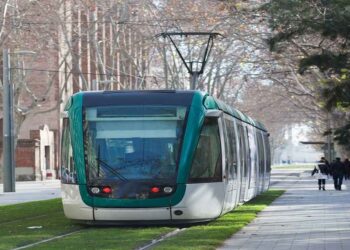Reconstruction works at the Farnworth tunnel have started near Bolton, UK, as part of a Network Rail project to electrify one of north-west England’s busiest rail routes.
With a cutting head 9m in diameter, the Farnworth tunnel boring machine (TBM) Fillie is currently the largest at work in the UK than the machines used to build London’s Crossrail (7.1m), the Thames Tideway ‘super sewer’ (8m) and even the Channel Tunnel (8.8m).
The reconstruction is part of more than £1bn of investment by Network Rail to improve rail services across the north, electrify major routes, create new rail links, and improve stations and journeys.
Work is being initiated as the twin Farnworth tunnels, which carry the railway under the main A666 Manchester to Bolton road cannot accommodate the overhead lines that will power a new fleet of electric trains in the future.
“Investing in transport, something that successive governments have failed to do sufficiently, is vital to making that happen.”
As part of the electrification project, one of the twin 270m single-track bores at Farnworth has been filled with 7,500m³ of foam concrete, which is now being dug out by the TBM.
UK Transport Secretary Patrick McLoughlin said: “This one nation government is determined to close the economic gap between north and south. Investing in transport, something that successive governments have failed to do sufficiently, is vital to making that happen.
“We had a choice; building the infrastructure our country needs, or letting our transport system become a brake on growth and opportunity. We have chosen to invest for the future.
“Across the north, that investment is already having a huge impact. We are determined to keep the momentum going.”
So far, the project has seen the complete demolition of Farnworth and Moses Gate train stations, with work started to rebuild them on their new alignments.
More than 1,600m of tracks are lowered, a 300m motorway standard access road has been built, removing between 40 and 120 lorries from residential roads each day.
The project also included construction of a new footbridge at Kearsley, as well as the installation of a concrete lining and permanent rib supports to the operational tunnel.
































